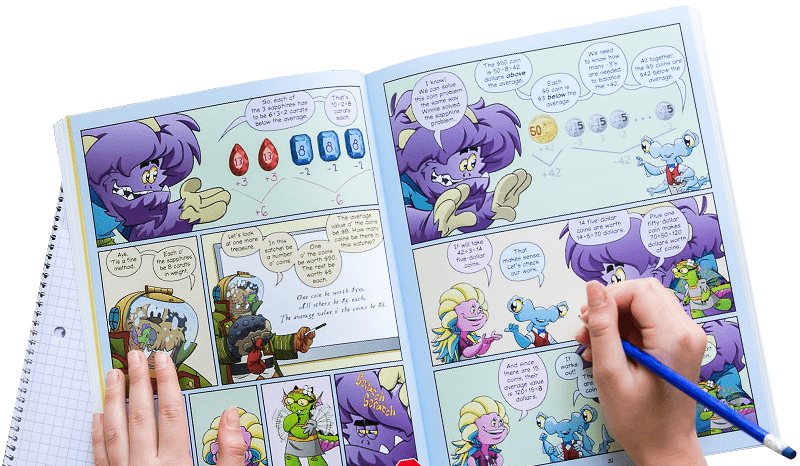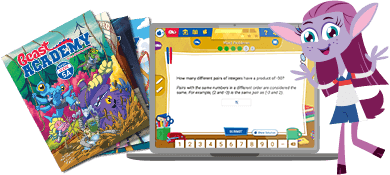Pick Your Pony
Practice addition by placing your bets on ponies 1 through 12. First to the finish line wins!
Instructions
First, set up the racetrack for your ponies. Divide your paper into 12 "lanes" by drawing horizontal lines across. (See Learning Notes below for tips.)
Draw vertical lines to split each lane into at least 6 spaces. Write the numbers 1 through 12 down the left column, and write "win" in each space in the right column (or color the column red, or anything to mark it off as the finish line).

Each player has three tokens of their own color to use as ponies. (Coins or checkers would work well. Just make sure you can tell each other's tokens apart). Take turns placing your ponies on numbers.

Now it's time to open the starting gates and let those ponies run! Take turns rolling two dice. Add the numbers on the dice. If the sum of the dice equals a lane with a pony, move the pony up one space, even if it's your opponent's pony.
The first player whose pony reaches the finish line wins!


As you play, notice which ponies move ahead most often. Certain numbers, like 7, can come up in a few different ways (1 + 6, 2 + 5, 3 + 4), whereas others come up less frequently (12 = 6 + 6) or not at all (1 = 1 + ???). It's best to let kids notice these patterns naturally, through playing the game, then ask leading questions: "Wow, you're right! 7 has always been a pretty good pony! Why do you think that is?" See Learning Notes below for more information on the probability of rolling each sum.
Don't forget: it's Beast Academy Playground, not Beast Academy Study Hall. Change the rules, be silly, make mistakes, and try again. The Variations and Learning Notes are here for you if you want to dive deeper, but not all of them apply to learners of every age. The most important thing is to have fun.
What do you think of this activity?
We're always looking to improve. Submit your feedback to us below.
- 6 tokens (3 of one color, 3 of another)
- 2 dice
- paper
- pencil
- spatial reasoning
- strategic thinking
- MP7
- K.CC.A.3
- K.OA.A.1
- K.OA.A.5
- 1.OA.C.6
- 2.OA.B.2
- 2.G.A.2

Ready to level up?
Keep problem solving with Beast Academy’s full math curriculum for students ages 6–13. Check out our captivating comic book series and immersive online platform.
LEARN MOREBring problem-solving to your classroom
Keep your entire class engaged with a full book and online math curriculum, for students ages 6–13. 98% of teachers say they’re satisfied with Beast Academy.
LEARN MORE



Ready to level up?
Keep problem solving with Beast Academy’s full math curriculum for students ages 6–13. Check out our captivating comic book series and immersive online platform.
LEARN MOREBring problem-solving to your classroom
Keep your entire class engaged with a full book and online math curriculum, for students ages 6–13. 98% of teachers say they’re satisfied with Beast Academy.
LEARN MORE
Sign up to be notified when new videos are released.



















































